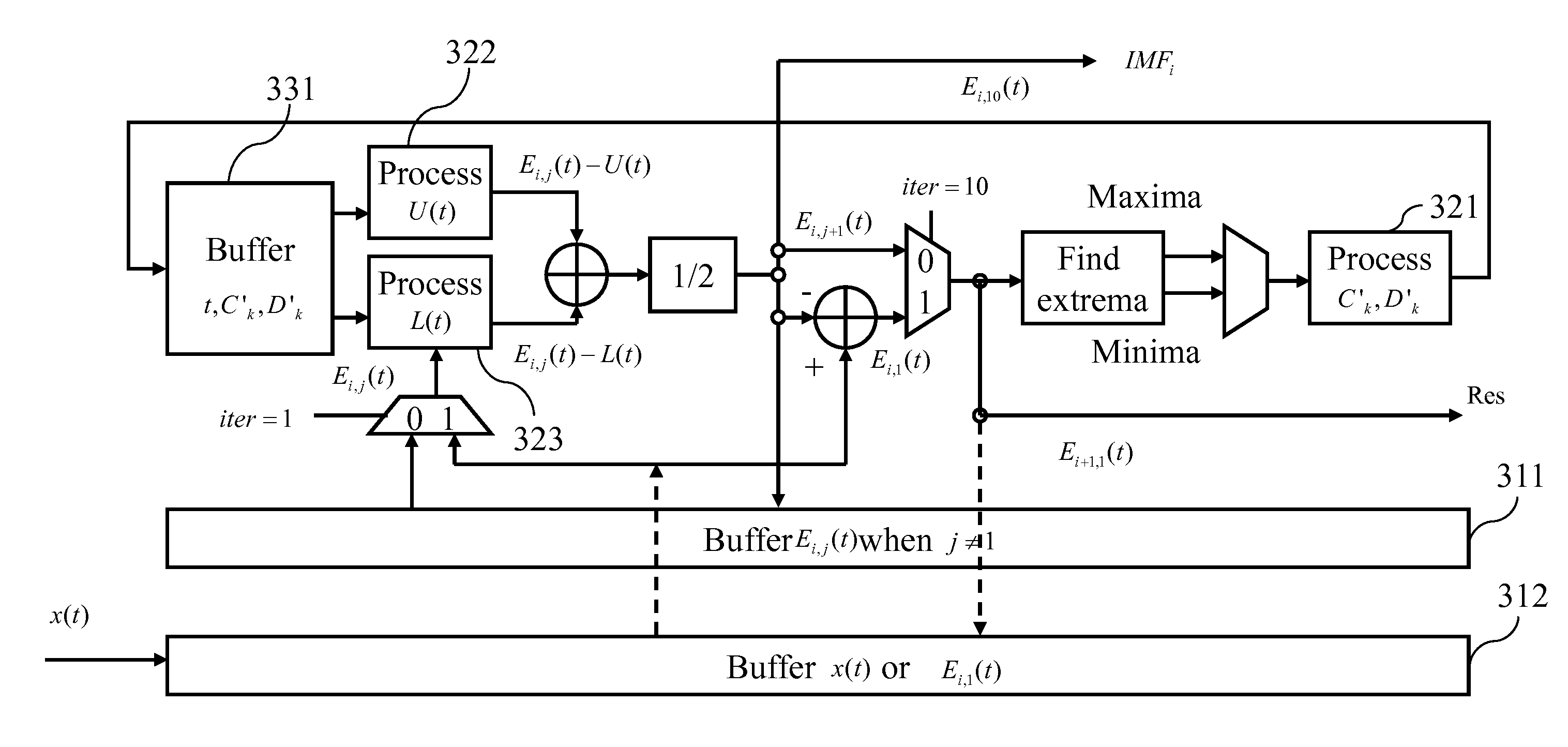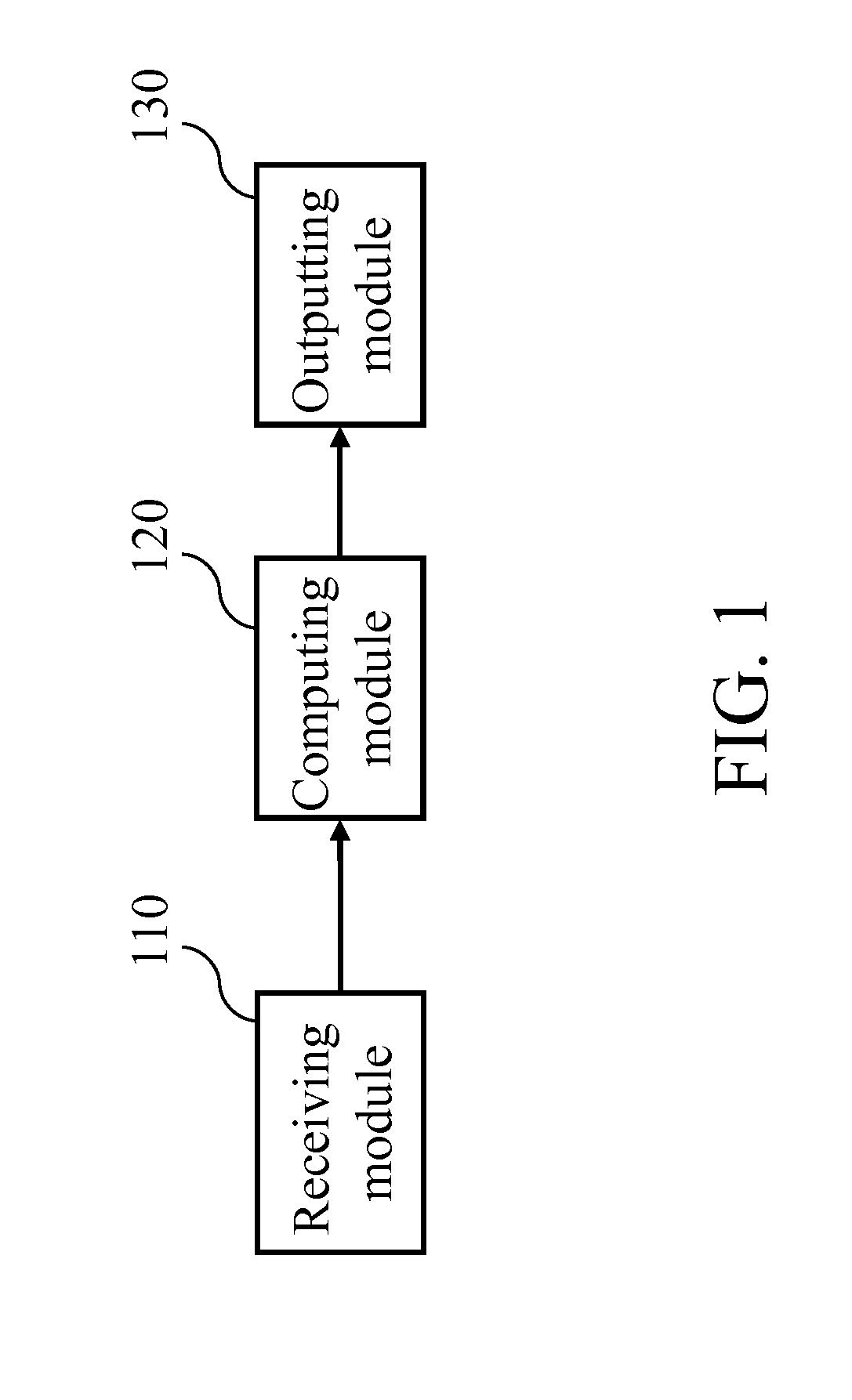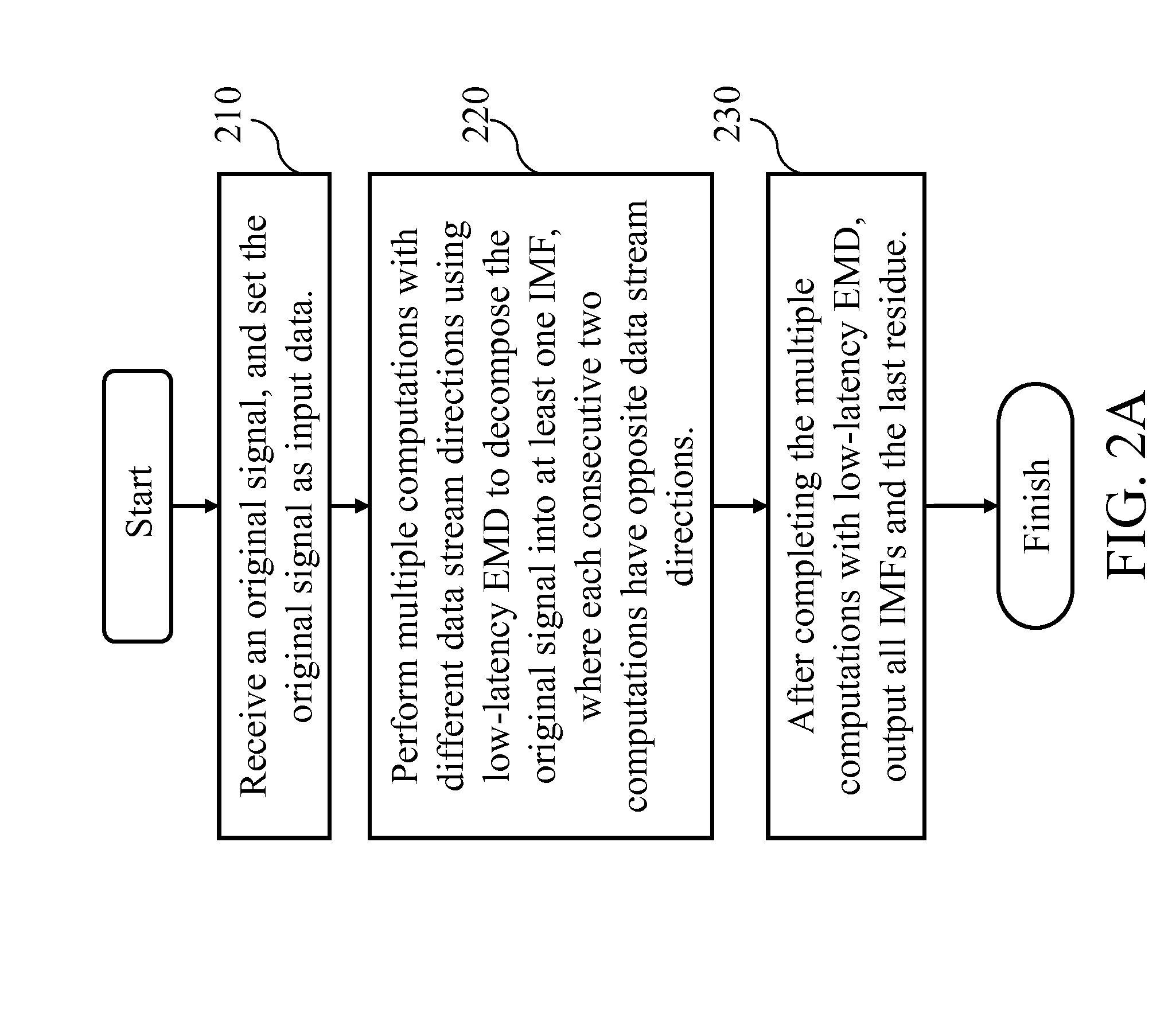Signal decomposition system with low-latency empirical mode decomposition and method thereof
a signal decomposition and empirical mode technology, applied in the field of signal decomposition system and the method, can solve the problems of low signal decomposition efficiency, high latency, and still has problems, and achieve the effects of reducing the number of data stream direction reversals, increasing signal decomposition efficiency, and saving computing tim
- Summary
- Abstract
- Description
- Claims
- Application Information
AI Technical Summary
Benefits of technology
Problems solved by technology
Method used
Image
Examples
Embodiment Construction
[0019]The present invention will be apparent from the following detailed description, which proceeds with reference to the accompanying drawings, wherein the same references relate to the same elements.
[0020]Before describing in detail the disclosed signal decomposition system and method with low-latency empirical mode decomposition (EMD), we first define terms used herein. Each computation mentioned in this specification includes the following steps:
[0021](1) find a plurality of maxima and a plurality of minima;
[0022](2) use cubic-spline interpolation (CSI) to compute an upper envelope for the plurality of maxima and a lower envelope for the plurality of minima, and reverse a data stream direction;
[0023](3) compute an average for the upper envelope and the lower envelope;
[0024](4) subtract the average from the input data to generate a difference and, when the number of difference generations is below a predetermined value, use the difference as the input for redoing the computation...
PUM
 Login to View More
Login to View More Abstract
Description
Claims
Application Information
 Login to View More
Login to View More - R&D
- Intellectual Property
- Life Sciences
- Materials
- Tech Scout
- Unparalleled Data Quality
- Higher Quality Content
- 60% Fewer Hallucinations
Browse by: Latest US Patents, China's latest patents, Technical Efficacy Thesaurus, Application Domain, Technology Topic, Popular Technical Reports.
© 2025 PatSnap. All rights reserved.Legal|Privacy policy|Modern Slavery Act Transparency Statement|Sitemap|About US| Contact US: help@patsnap.com



